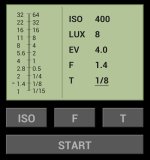I own the Sekonic L-758DR and use it on a daily basis in my work. Like many that use meters for many years, you do get to know your camera's sensor, its dynamic range and limitations, and when it comes to wide dynamic range where you want to capture in camera what you're seeing without losing detail in the shadows or highlights, it's a fantastic thing to use.
Having said that, I generally only use my hand held meter when using strobes but more importantly, when I want to dial in a specific balance of flash to ambient or when using multiple and mixed light sources.
I'm sure I'll get some flack for this statement, but when you're working with clients, chimping is just a waste of time and makes you look very unprofessional. The layperson has no clue about technical details and doesn't mind test shots and such, but clients that are paying a bill and have a working knowledge of photographers and the gear they use, they scratch their heads when they see you taking test shots, adjusting, test shot, adjust, etc...
When balancing mixed lighting it's impossible to know what you're going to get without test shots. With a meter, I meter once and begin shooting. No test shots, no chimping.
If you were working on a catalog, for instance, and your client loved the look and feel of a particular balance of flash to ambient and wanted that look to be repeated throughout a series or the entire catalog, you'd look ridiculous if you were chimping and trying to ensure the balance is right based on what you see on the back of your camera. It's a joke, in my opinion.
In many instances, jobs like that require the shots to be perfect and at times the memory card or the files are handed off to the client without any post processing on your end. The last thing you want is for the client to call and bitch about the inconsistencies in your shots.
The moral of the story is that there is a time and place for a meter and at times it's not a necessity. Other times it's an invaluable tool to have.
As a side note related to the L-758DR... this meter is fantastic but has a full feature set that most people don't need or require. Custom profiling is a great feature to have when dynamic range and precise placement of midtones, whites and blacks really matter. If those things don't matter to your work then you can use just about any light meter on the market.

